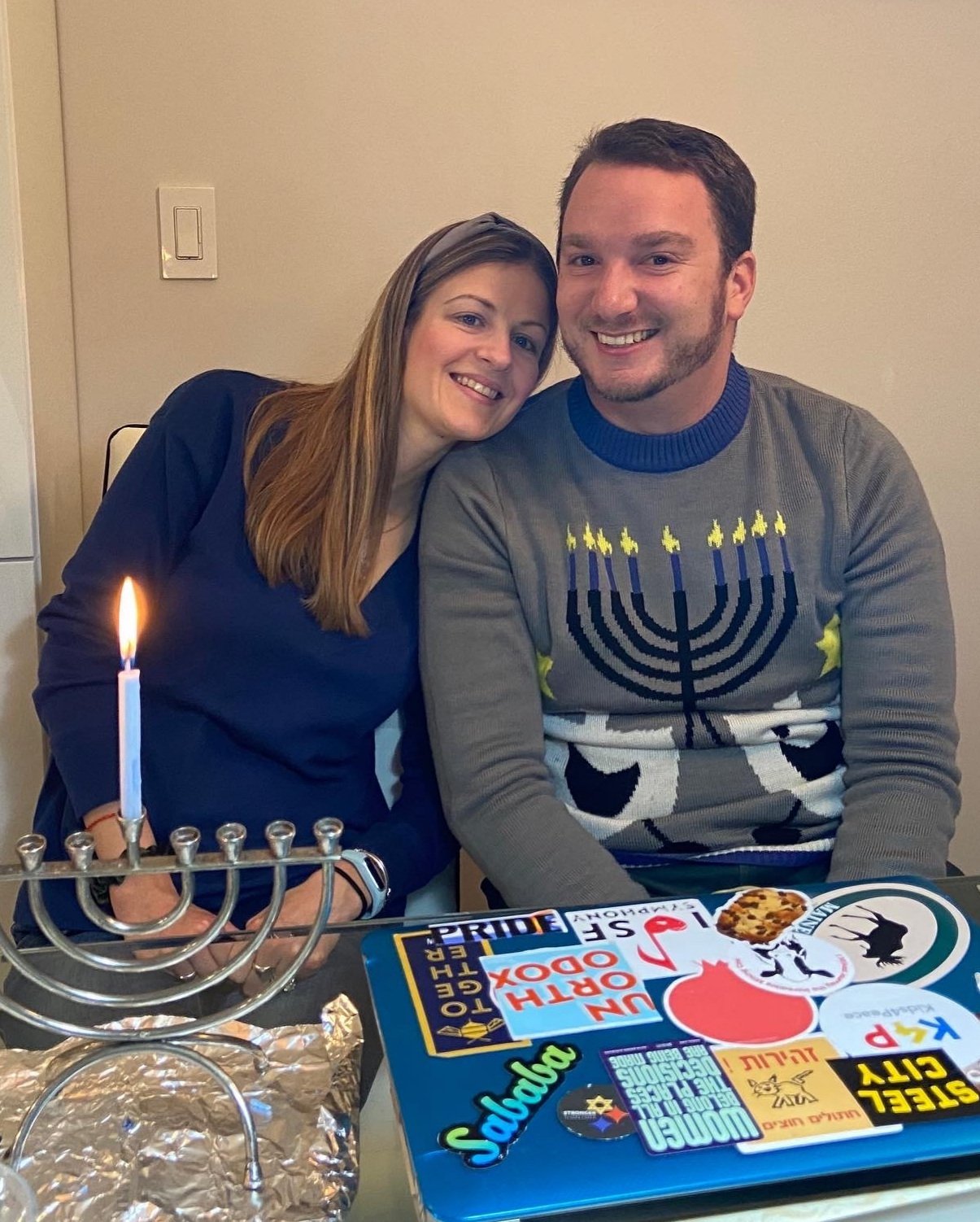My Background
I was born into an interfaith family with a Catholic mother and a Jewish father. My parents decided not to raise their children with either religion, but rather with both. I grew up celebrating Passover, Easter, Christmas, Hanukkah, and the High Holydays. At the age of ten, my family moved to Pittsburgh. Soon after our move, my dad’s father passed away. At his funeral, I was amazed by the generosity and rituals of the community and ceremony. I loved that people reached out to my family when we observed shiva and made us feel at home and welcome in our new community. This inspired me to learn more about Judaism and make Judaism my religion of choice. I met with a local rabbi for three years and learned about Jewish customs, Tanakh, Hebrew, history, and Israel; and this study concluded with my Bat Mitzvah.
My love for Judaism stayed with me throughout college where I chose to study abroad for a semester at Hebrew University in Jerusalem. There I met an Orthodox professor who told me I wasn't Jewish because of my interfaith background. Upset and frustrated by that conversation, I researched and wrote my college thesis on how Reform Jews and Jews of interfaith backgrounds are viewed in Israel and why. As I wrote, I realized maybe I wasn’t ‘Jewish enough’ in that Orthodox professor’s eyes, but in my eyes, I was. I had learned that the only person who could say I was ‘Jewish enough’ was me. This reframing inspired me to become a rabbi—to give others a greater perspective on what being Jewish means, to challenge the stereotypes of Jewish people, and to give others confidence to create their own Jewish path.
My Judaism
For me, Judaism is about bringing people together around the Shabbat table, through scripture, and outdoors.
While living in Cincinnati, my husband and I would host classmates and friends whenever we could for Shabbat dinner. I loved sharing food and moments of gratitude with each person. There were often quiet moments, giving us the chance to reflect on the hectic week behind us. When we lit the Shabbat candles, our faces illuminated and we enjoyed a moment to pause and find meaning in the week. We haven’t had the opportunity to host many Shabbat dinners since moving due to the pandemic. However, we continue to share food, gratitude, and light with each other each Friday evening.
Judaism is a religion built around questioning and learning. For me, that is emphasized by studying with others. Throughout my time as a rabbinical student, I studied independently with several mentor rabbis in Cincinnati. Through the practice of chavruta, we explored pieces of scripture, poems, and midrash. I have continued to study both on my own, reading Parashat HaShavua and studying Talmud, and reading Ruth Calderon’s A Bride for One Night in Hebrew with another mentor. These experiences have taught me that studying with another is a sacred conversation—it not only results in learning, but it leads to friendship and respect.
Interfaith Work
In an homage to my interfaith roots, I seek to enhance others’ understanding of religion. In 2017 I had the opportunity to be the director of Kids4Peace Day Camp in Cincinnati. This camp brought together Jewish, Christian, and Muslim students to learn how to create peace in their communities. Throughout the week, the students engaged in religious dialogue. These conversations created new bonds of friendship and loyalty based on what was learned. Each day focused on a different religion, giving the students opportunities to ask questions, teach others, and form a new community. The last day was a social action project in which the students took their first step toward making the world a better place. This week taught me that curiosity allows us to expand our minds and open our hearts to new beginnings and relationships.
This experience with Kids4Peace inspired me to write my rabbinical thesis on how experiential education can bring people of different religions together. Instead of focusing on the divisions that divide different religions, I emphasized building bridges to create synergy and make this world a better place. I created a curriculum inspired by my time in Kids4Peace to transform a coincidence of coexistence into an opportunity for education and friendship.
Since moving, I have continued my interfaith work in various communities. I connected with the Franciscan community in Dubuque, IA, learning about their customs and how they give back to the community. Many of my patients at the hospital aren’t Jewish—each conversation is one of learning and questioning. These interactions have taught me about Catholic, Hindu, and Lutheran end of life rituals, for example. One patient taught me about his community as a Jehovah’s Witness. And one family let me witness a baptism of a baby who would only live five days. From these experiences, I learned that there are different ways to make moments sacred. These interfaith conversations create connections, allowing us to engage in the intimate act of praying together as people of different religions.



